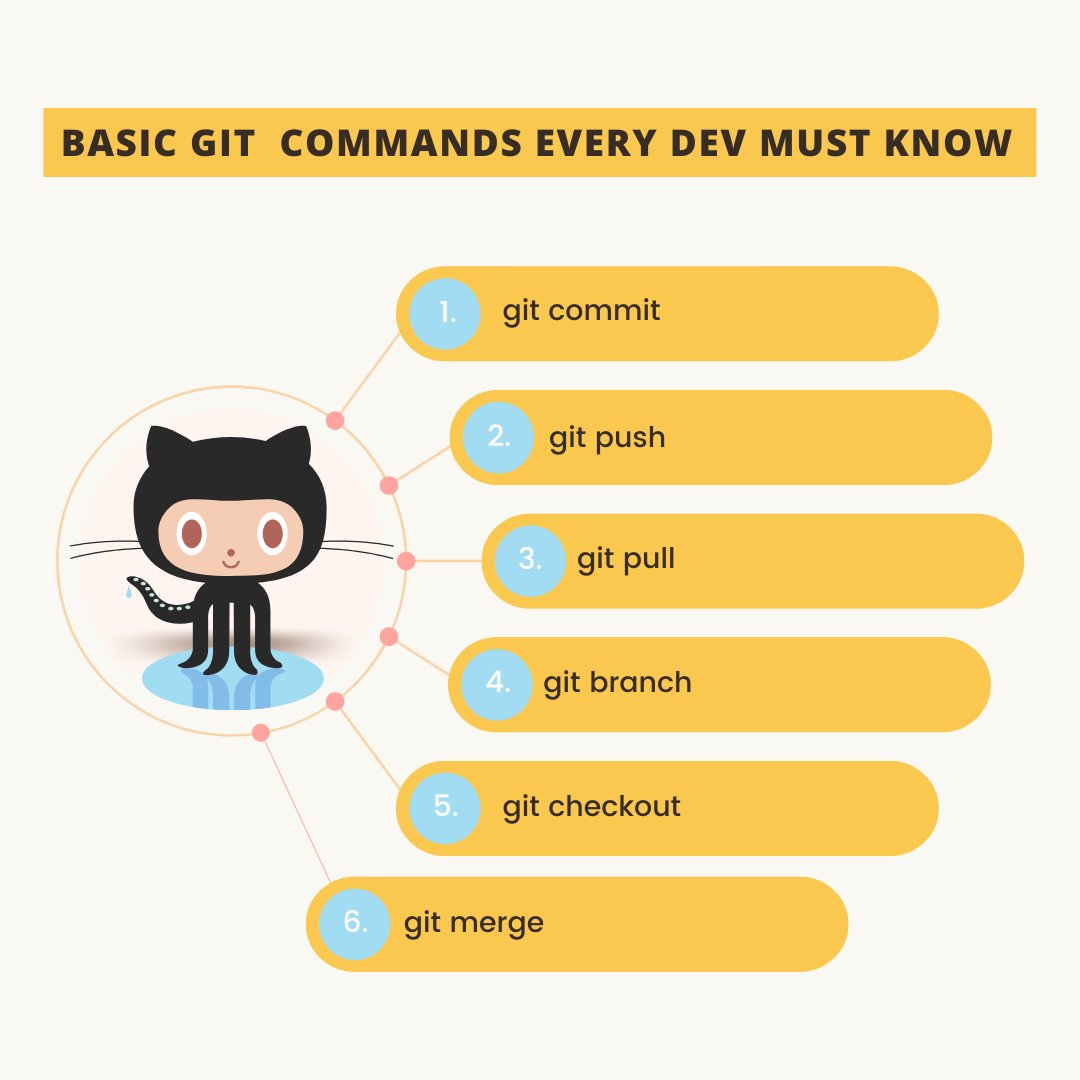A Comprehensive Guide to GitHub Commands
 Abhishek Kumar
Abhishek Kumar
Introduction:
GitHub, the world's leading platform for version control and collaborative software development, is a crucial tool for developers and teams. While its web interface provides a user-friendly environment, mastering GitHub commands can greatly enhance your efficiency and control over your repositories. In this blog post, we will explore some essential GitHub commands that every developer should know.
Cloning a Repository:
To begin working on an existing repository, you need to clone it to your local machine. Use the following command:
git clone <repository-url>Replace
<repository-url>with the URL of the repository you want to clone.Initializing a Repository:
If you're starting a new project, you can initialize a new Git repository with:
git initThis command creates a new Git repository in the current directory.
Checking Repository Status:
To view the status of your changes (untracked, modified, or staged), use:
git statusThis command provides a snapshot of the current state of your working directory.
Adding Changes:
Before committing changes, you need to stage them. The following command stages all changes:
git add .Replace
.with specific file names or directories if you want to stage only specific changes.Committing Changes:
git commit -m "Your commit message here"This creates a new commit with the specified message.
Pushing Changes:
git push origin <branch-name>Replace
<branch-name>with the name of the branch you are pushing.Pulling Changes:
Keep your local repository up-to-date by pulling changes from the remote repository:
git pull origin <branch-name>This command fetches changes and merges them into your local branch.
Creating a Branch:
Start working on a new feature or bug fix by creating a new branch:
git checkout -b <branch-name>Replace
<branch-name>with a meaningful name for your branch.Switching Branches:
Switch between branches using:
git checkout <branch-name>Merging Branches:
Merge changes from one branch into another:
git merge <branch-name>Creating Pull Requests:
If you're working in a collaborative environment, submit changes for review with a pull request:
gh pr create --base <base-branch> --head <head-branch> --title "Your pull request title"Replace
<base-branch>,<head-branch>, and the title with appropriate values.Viewing Commit History:
Examine the commit history of a repository:
git logThis command provides a detailed list of commits.
Conclusion:
Mastering GitHub commands is a valuable skill for any developer. Whether you're collaborating on a project or managing your own repositories, these commands empower you to efficiently navigate version control, streamline workflows, and contribute effectively to the world of open-source development. As you become more familiar with these commands, you'll find yourself navigating GitHub with greater confidence and control.
Subscribe to my newsletter
Read articles from Abhishek Kumar directly inside your inbox. Subscribe to the newsletter, and don't miss out.
Written by

Abhishek Kumar
Abhishek Kumar
I am a versatile full-stack developer with expertise in both modern and traditional web technologies. My skill set encompasses the MERN (MongoDB, Express.js, React.js, Node.js) stack, enabling me to build scalable and efficient web applications with ease. Additionally, I have extensive experience in PHP, allowing me to tackle a wide range of projects and integrate legacy systems seamlessly. With a passion for problem-solving and a keen eye for detail, I strive to deliver high-quality solutions that exceed expectations. My dedication to staying updated with the latest industry trends and best practices ensures that my work is always cutting-edge and future-proof.